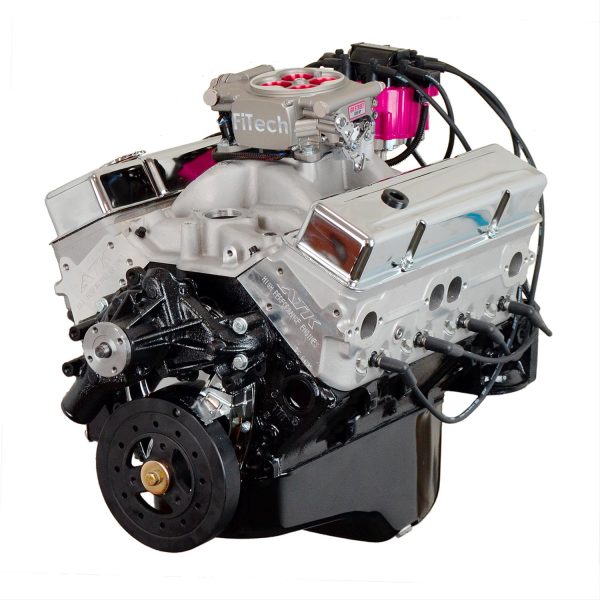
Hot rodding EFI engines is a passion that many car enthusiasts share. Whether you’re looking to increase horsepower, improve acceleration, or just make your car sound and look more aggressive, there are plenty of ways to modify your EFI engine to achieve your desired results.
Firstly, let’s talk about what EFI engines are. EFI stands for Electronic Fuel Injection, and it’s a type of engine management system that uses sensors, computers, and injectors to control the amount of fuel that enters the engine. Compared to carbureted engines, EFI engines are more efficient, reliable, and easier to tune.
Now, let’s dive into the ways you can hot rod your EFI engine. One of the most popular methods is adding a cold air intake. A cold air intake replaces the restrictive factory air box and filter with a high-flow cone-shaped filter that draws in cooler air from outside the engine bay. This allows more oxygen to enter the engine, resulting in better combustion and increased horsepower.
Another way to improve the performance of your EFI engine is by upgrading the exhaust system. A high-performance exhaust system replaces the factory exhaust system with larger-diameter pipes, high-flow mufflers, and headers. This reduces exhaust backpressure and allows the engine to breathe better, resulting in improved horsepower and torque.
If you want to take your hot rodding game to the next level, you can also consider upgrading the camshaft, cylinder heads, and fuel injectors. These modifications require more expertise and experience, but they can significantly increase your engine’s performance and give it a more aggressive sound and feel.
Of course, hot rodding isn’t just about performance; it’s also about aesthetics. You can make your EFI engine look more impressive by adding chrome or polished aluminum valve covers, air intake tubes, and other engine dress-up components. You can also replace your factory wheels with aftermarket ones that complement the overall look and style of your car.
In conclusion, hot rodding EFI engines is a thrilling hobby that allows you to unleash the full potential of your car. Whether you’re a seasoned mechanic or a novice enthusiast, there are plenty of ways to modify your engine to achieve your desired results. Just be sure to do your research, follow proper installation procedures, and always prioritize safety. Happy hot rodding!
Overcoming Constraints to Maximize the Power of Your EFI Engine
EFI engines have become the standard in modern cars, providing greater efficiency and performance than their carbureted counterparts. However, like any other engine, EFI powerplants also have their constraints. These constraints are important to understand if you want to get the most out of your engine and avoid costly mistakes.
One of the biggest constraints of EFI engines is their limited airflow. The intake and exhaust systems of EFI engines are often designed to meet emissions regulations, which can limit the amount of air that enters and exits the engine. This restricted airflow can limit the engine’s power potential and prevent it from reaching its full performance capabilities.
Another constraint of EFI engines is their factory tuning. The engine control module (ECM) is programmed with conservative settings to ensure that the engine meets emissions regulations and avoids potential damage. However, these settings can limit the engine’s power and responsiveness. To unleash the full potential of your engine, you may need to reprogram or upgrade the ECM to optimize the engine’s performance.
The fuel system is also a constraint of EFI engines. The fuel injectors are designed to deliver a specific amount of fuel based on the engine’s requirements, but they can become overwhelmed when the engine is modified to produce more power. To overcome this constraint, you may need to upgrade to larger fuel injectors or install a high-performance fuel pump to supply the engine with more fuel.
Another constraint to consider is the engine’s cooling system. The increased heat generated by a modified EFI engine can quickly overwhelm the factory cooling system. To prevent overheating and potential engine damage, you may need to upgrade your radiator, water pump, and other cooling components.
Lastly, the transmission can also be a constraint of EFI engines. The increased power and torque generated by a modified engine can cause the factory transmission to fail. To avoid this, you may need to upgrade to a stronger transmission or install a shift kit to improve the transmission’s durability and responsiveness.
In conclusion, EFI engines have their constraints, but they can be overcome with the right modifications and upgrades. Understanding the limitations of your engine and addressing them with the right parts and tuning can help you unlock the full potential of your EFI powerplant. So, if you’re looking to get the most out of your engine, do your research and invest in the right upgrades to enhance your engine’s performance and durability.




